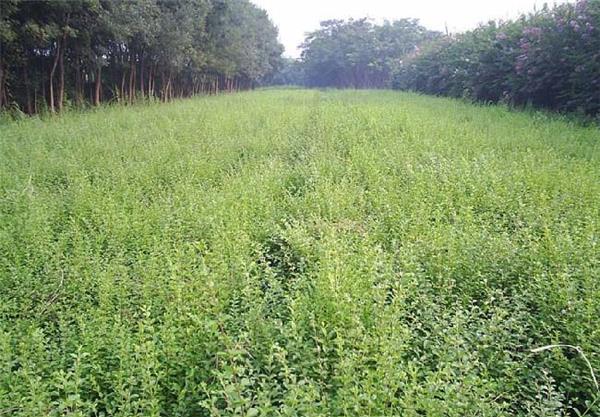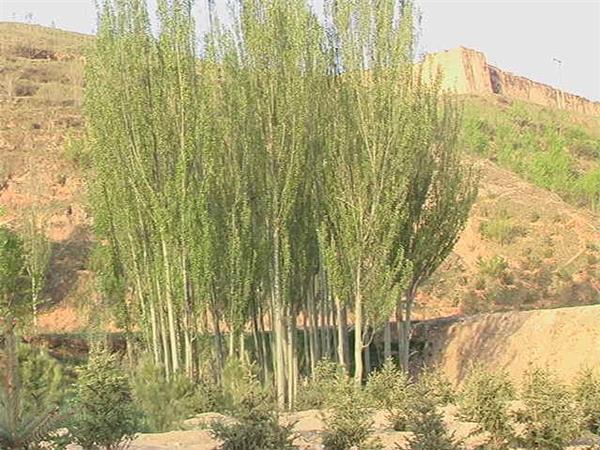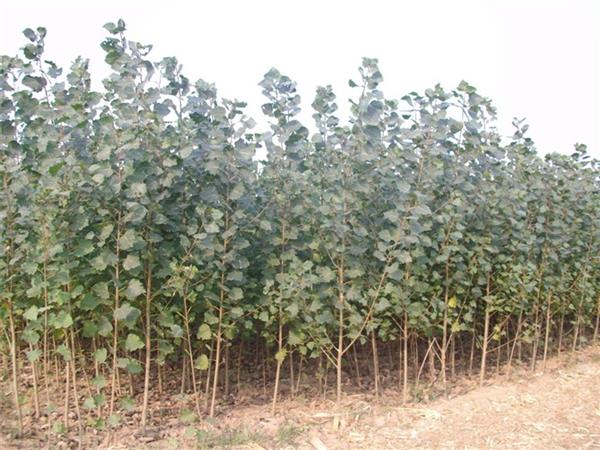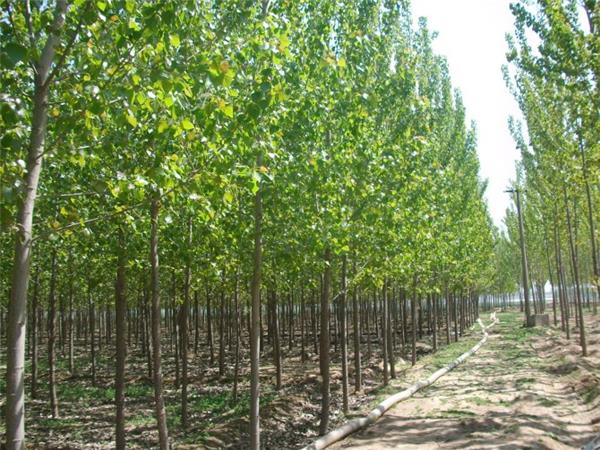How to maintain Poplar seedlings and how to plant Poplar seedlings
Poplar seedlings need to be taken seriously from seedling raising to breeding care. Although its natural disposition is relatively strong, it can't bear to be hurt, right? Therefore, when transporting and planting it, we must master the necessary planting techniques to avoid damaging it.

1. Transportation protection of poplar seedlings
Seedling: In the place where autumn afforestation is carried out, trees can be seedlings after normal defoliation, and immediately stacked in grades and transported to the afforestation site for fixed value. The seedling roots need to be basically intact to prevent mechanical damage to seedlings. Spring comes with planting. However, if the winter weather conditions are harsh or it is necessary to vacate the land for other purposes, it can also be used in autumn, digging trenches in the leeward sun for winter.
Seedling transportation: In the process of seedling transportation, it is mainly necessary to prevent seedling mechanical damage and water loss, among which the main attention is to protect seedling roots and terminal buds. During long-distance transportation, the roots and seedlings should be wrapped or covered with wet straw mats or felt cloth, and water should be sprinkled on the roots from time to time to prevent the roots from being exposed to sunlight or dried by strong wind.

II. Planting management of poplar seedlings
Soil preparation: complete tillage in winter, more than 40cm of cultivated land depth, laying good drainage and irrigation system, fine soil preparation before planting in the second year must be broken, can better maintain moisture.
Insertion: Under normal circumstances, direct insertion should be adopted, not oblique insertion. Manual insertion should be adopted, and the top should be inserted directly into the soil from the mulching film, and the top should be about 0.5cm higher than the mulching film. After planting, the mulch should be properly pressed to prevent wind blowing. Row spacing 60, plant spacing 30-35 can be, 3100-3700 plants per mu.
Irrigation: irrigation should be thoroughly every time, and then loose soil to preserve moisture. After the local temperature can be stabilized above 15℃, regular irrigation can be carried out. In order to promote the rooting of cuttings, it is necessary to irrigate them immediately after they are inserted into the soil, so as to improve the ground temperature and control the irrigation times appropriately. Summer seedling growth peak, but also timely irrigation, so as to ensure that the full play of the growth potential of seedlings.
Fertilization: In the nursery, the population density of seedlings is very high, and a large amount of nutrients need to be taken from the soil every year. Therefore, in addition to applying a large amount of base fertilizer in the year before seedling, topdressing should be applied 2-3 times. The amount of topdressing and the ratio of fertilizer to seed vary with soil conditions, poplar varieties and seedling growth.
Weeding: in the nursery ridge bed covered with plastic film early do not weed, black film opaque weeds will not grow, to the end of June can remove the plastic film for loosening, if there are weeds can use herbicides, nursery weeding to implement the principle of "early, small, except".

III. Control of main diseases and insect pests of poplar seedlings
Longicorn beetle: mid-month adults climb out, 2-5 days mating, about 2 days after laying eggs. In mid-late May, they hatch into larvae and invade young shoots to do harm. The harmful tree species mainly involve dozens of tree species such as poplar, willow, elm, walnut, paulownia and chestnut. Organophosphorus pesticides such as 40% omethoate emulsifiable concentrate, 50% phoxim emulsifiable concentrate, 50% phosphomine emulsifiable concentrate and 50% fenitrothion emulsifiable concentrate were sprayed on the trunk to control the oviposition and hatching of longicorn beetles.
Spring ruler moth: newly hatched larvae feed on buds and buds, older larvae feed on leaves. The injured leaves are incomplete, and the heavy ones are eaten up. At this time, the larvae spin silk and transfer to nearby trees by wind. In the serious forest stand, we should seize the larval peak stage and spray trichlorfon, imine, deltamethrin, omethoate, etc. according to the conventional concentration, which can receive good insecticidal effect.

All right, that's all there is to it about poplar seedlings. Poplar trees come in many varieties and are a great choice for decorating your yard. If you are struggling with what you want to plant in your yard, poplar trees can be a priority.
Related
- Wuhan Hospital Iron Tree Blooming Result Was Instantly Frightened by the Gardener Master
- Which variety of camellia is the most fragrant and best? Which one do you like best?
- What is the small blue coat, the breeding methods and matters needing attention of the succulent plant
- Dormancy time and maintenance management of succulent plants during dormancy
- Minas succulent how to raise, Minas succulent plant pictures
- What are the varieties of winter succulent plants
- How to raise succulent plants in twelve rolls? let's take a look at some experience of breeding twelve rolls.
- Attention should be paid to water control for succulent plants during dormant period (winter and summer)
- Watering experience of twelve rolls of succulent plants
- Techniques for fertilizing succulent plants. An article will let you know how to fertilize succulent plants.



